Specialized facilities and equipment of the MagLab's Cryogenics Group
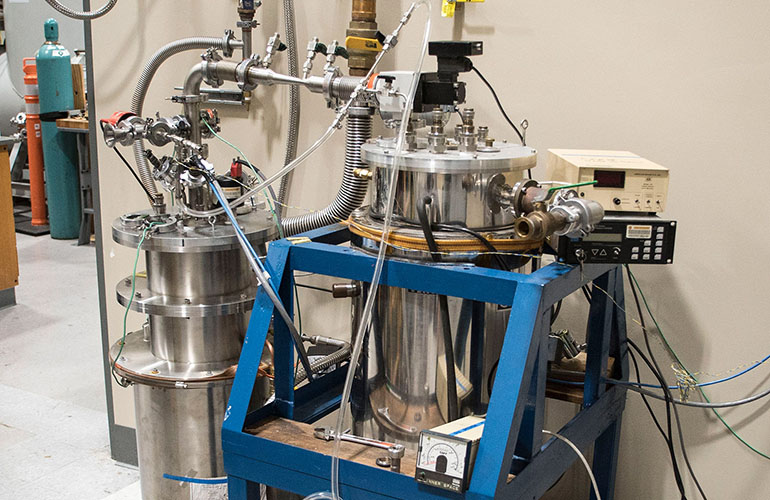
We have various traditional cryostats, cryocoolers, vacuum pumping stations, and other cryogenic equipment, as well as all of the necessary tools, to design and conduct many experiments with cryogenic fluids.
Our liquid helium research cryostats range in size from 4 in. diameter by 44 in. deep all the way up to 10 in. diameter by 72 in. deep, and will accommodate any experimental apparatus that fits inside. We have several cryocoolers with various cooling power as well access to liquid cryogens and storage dewars. Our vacuum pumping stations range in capability from high vacuum (turbomolecular pumps) to high capacity (over 1700 cfm). Besides this hardware we have numerous temperature sensors, pressure transducers, flow meters, etc. to measure and control the quantities of interest during an experiment. These cryogenic apparatus and measurement devices allow us to design and construct a wide range of experiments on cryogenic fluids and the properties of materials at low temperatures.
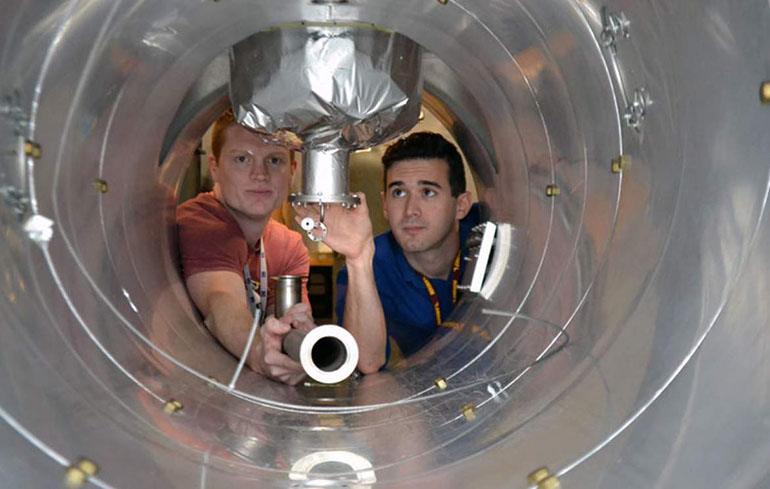
Looking inside the Cryogenic Helium Experimental Facility (CHEF).
The Cryogenic Helium Experimental Facility (CHEF) is for horizontal single- and two-phase heat transfer and flow studies.
The facility is 3 m long, has a 60 cm cold (4.2 K) ID and is equipped with horizontal access ports for future visualization studies. The facility is also equipped with a large single-stroke bellows liquid cryogen pump capable of volumetric flow rates of 2 liters/s.
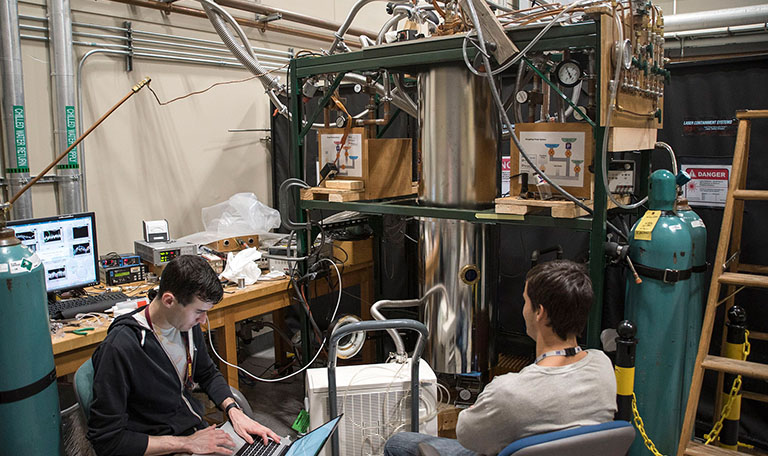
This is a specially designed superconducting magnet, capable of levitating liquid helium-4 droplets up to 2 cm in diameter, installed in a cryostat with optical access.
The product of magnetic flux density and flux density gradient, B dB/dz, in the bore of this superconducting solenoid can reach 22.5 T2/cm which is sufficient to levitate helium-4. The magnet is installed in an optical cryostat so visualization experiments can be performed on the levitated drops.
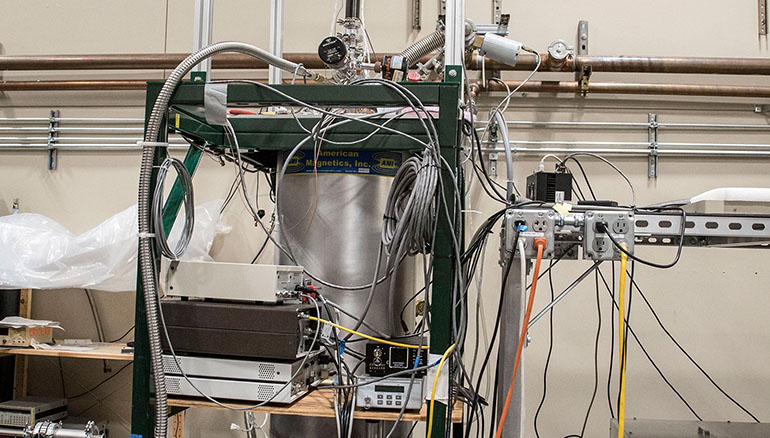
This facility makes use of a novel technique to generate metastable He2* triplet molecules for visualization studies in helium.
Our facility includes a commercial femtosecond regenerative amplifier laser system, pulsed Nd:YAG laser, two fiber-coupled continuous wave diode lasers, and an intensified CCD camera system. This equipment allows us to create and image a thin (100 um) line of metastable He2* triplet molecules for visualization studies in helium. The line is created in a customizable experimental cell attached to our low loss optical cryostat.
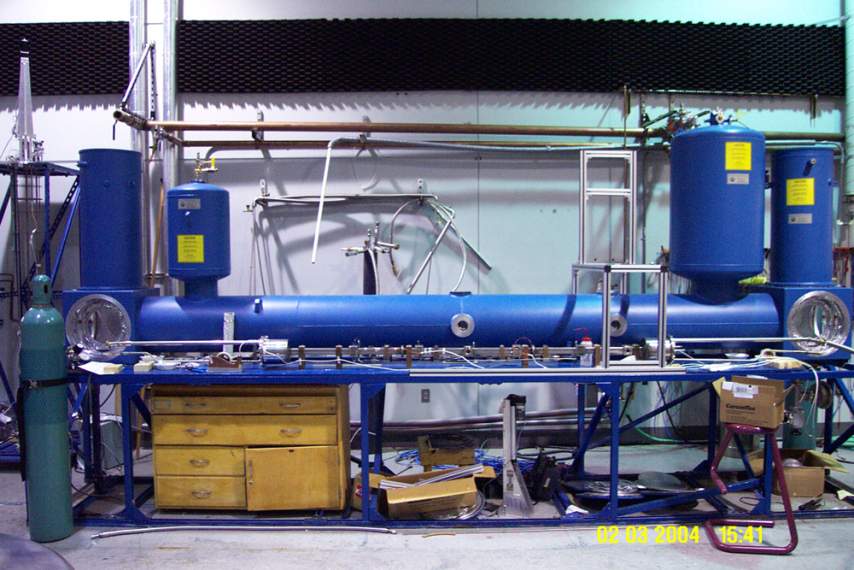
This facility consists of a 5 m long, 20 cm cold (4 K) ID horizontal cryostat with vertical reservoirs at both ends.
Either a single stroke bellows pump or a centrifugal pump can be used as a prime mover for fluid dynamics studies with this facility. The LHFVF has with two optical access ports for flow visualization studies.
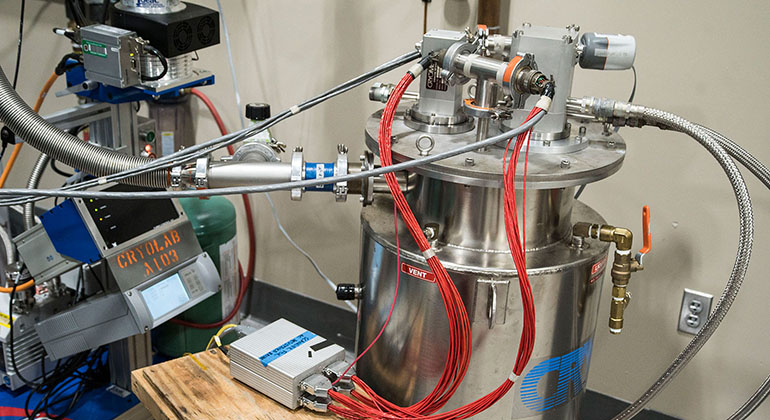
The Multi-layer Insulation Thermal Conductivity Experiment (MIKE) facility is a specially designed calorimeter for variable temperature boundaries controlled by two cryocoolers.
The facility consists of two concentric copper cylinders which are temperature controlled by cryocoolers and heaters. The MLI is attached in-between the cylinders by taping each layer to itself. The heat from the warm cylinder flows through the MLI to the cold cylinder and then through a calibrated rod to determine the heat load. The cylinder measures 191 mm in diameter and 1232 mm long. The warm cylinder measures 272 mm in diameter and 1524 mm long.
![]()
The flow visualization facility consists of an optical cryostat and all of the imaging equipment necessary for traditional velocimetry measurements.
The optical cryostat has a top-loading helium reservoir measuring 6 in. in diameter and 48 in. deep; the inside is visible via three sets of viewports with up to 2 in. diameter. Two laser systems (dual-head Nd:YAG at 532 nm and continuous wave solid state at 473 nm) and two cameras (intensified chargecoupled device and high-speed CMOS) allow a wide range of image data, from low light images to relatively high speed video.
Last modified on 29 December 2022